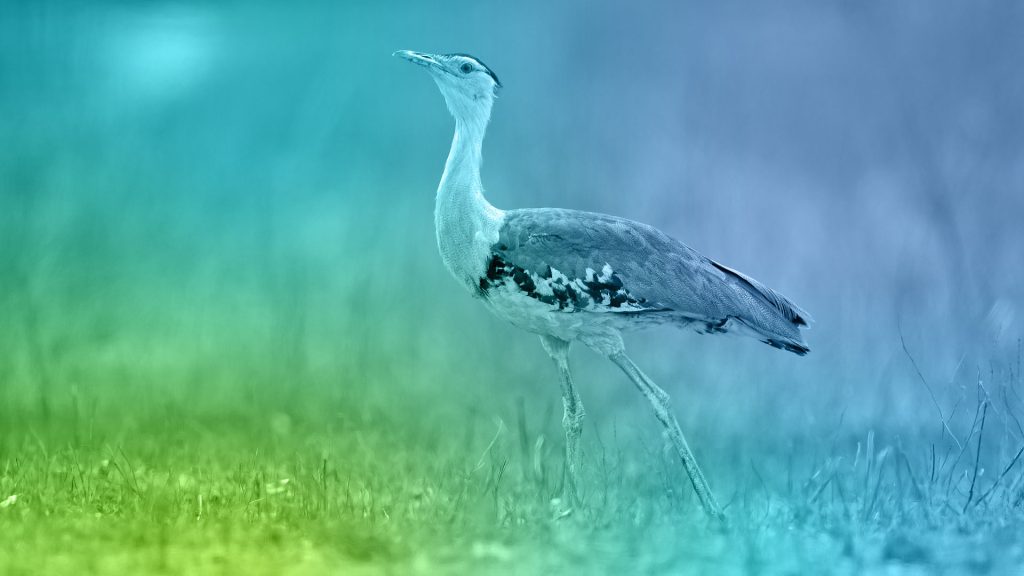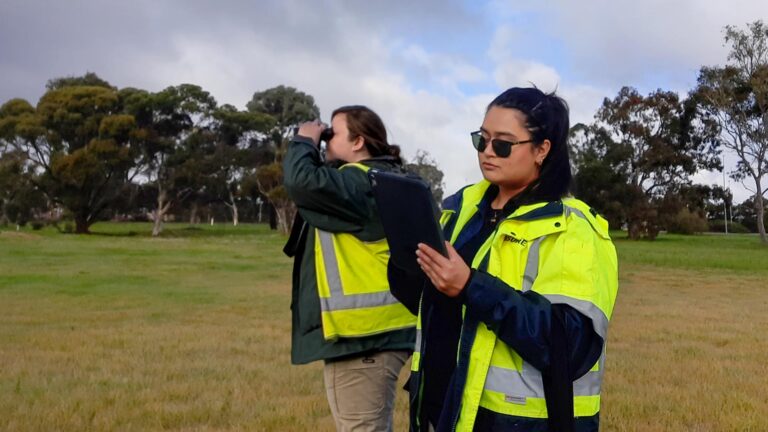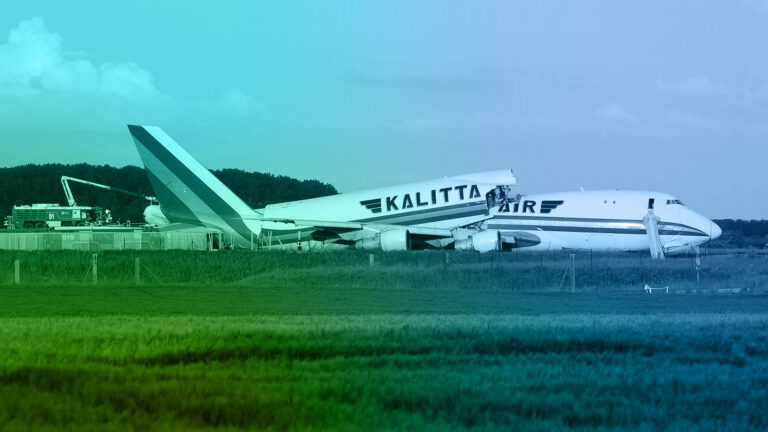Species spotlight: the Australian bustard (Ardeotis australis)
In recent discussion with several airports, they have reported ongoing issues with Australian bustards at ports in northern Australia. One significant strike experienced by a fly-in, fly-out operator (FIFO), for example, grounded the aircraft, with workforce disruptions and flow-on production delays.
Australian bustards are large: 76-150 cm tall and males weigh approximately 9kg with a 160-210 cm wingspan. During the breeding season, dominant males stand their ground, and have been observed refusing to yield even to large jet aircraft. Bustards are found across Australia, though less commonly in the south and south-east. If you operate in the northern areas of Australia, especially its open grassland and desert plains, their preferred habitat, you will be familiar with the Australian Bustard, aka the bush or plains turkey, or Ardeotis australis, to be formal.
Airports attract bustards because the open areas provide good predator detection, easy movement for foraging and sufficient space for take-off. As a last resort, in response to danger, bustards need several steps and open space to build up enough speed/force to lift off and fly, and typically take off into the wind.
Their large body mass, particularly the males (which reach up to an average 9kg, with a maximum recorded of 14kg), presents a serious strike risk. If you let them settle on the airfield, they are very stubborn and need persistent and ongoing dispersal to move them away. This is also challenging because although they can fly, they do so as a last resort. If disturbed, they prefer to walk or run away, which makes them more difficult to disperse.
Adding to the challenge is the fact that bustards are nomadic – they follow food, water and interestingly, fire. Consequently, there may be a sudden increase in bustard numbers following increased rainfall, grasshopper plagues, or fire, as they prefer to forage over open, recently burnt areas. Their breeding season in northern Australia can happen at any time during the year, being triggered by rainfall. ‘Their movements are irregular but can cover large distances, consequently they may abruptly appear and disappear from the landscape making their numbers hard to predict (Marchant & Higgins 1992)’.
From 2006–2022, according to the Australian Transport Safety Bureau (ATSB) database there were 55 bustard strikes. Queensland (31) and Western Australia (16) recorded the most events. Most recorded strikes (48 per cent) occurred in summer, followed by autumn (19 per cent), and winter and spring (both 17 per cent).
Fifteen per cent of the ATSB recorded bustard strikes resulted in damage, including:

5.5%
3.6%
1.8%
1.8%
1.8%
There have been several recent notable bustard strikes in Australia and internationally. The Australian accidents involved aerial application in Queensland, and the international accident a BAE Jetstream 41 flying into a mine site airfield in South Africa.
In 2011 near Emerald, an Air Tractor AT-802A hit a bustard during take-off, damaging the wing. The pilot, who was thankfully unharmed, lost control of the aircraft, and the left wing struck a fence.
Sadly, the experienced Air Tractor AT-502B aerial application pilot who struck a bustard when spraying 2m above ground level near Chinchilla in Queensland in 2022, did not survive, and the aircraft was destroyed.
In South Africa, a BAE Jetstream 41 was landing at Venetia Mine Aerodrome in 2021 when it struck a Kori bustard. The Kori is the much larger cousin of the Australia bustard, weighing 11–19kg. The strike damaged the engine’s gearbox, dislodging a propellor blade which penetrated the fuselage. Luckily no-one was injured, as the seat near the broken window was vacant.
Images from Kori Bustard Strike, Venetia Mine Aerodrome, South Africa (South African Civil Aviation Authority, 2021)
Watch ‘u’ spell it correctly!
‘There is an exquisite fowl
With minimal reason to growl
It escapes what would be
Illegitimacy
By the grace of a fortunate vowel.’Elizabeth Livingston




